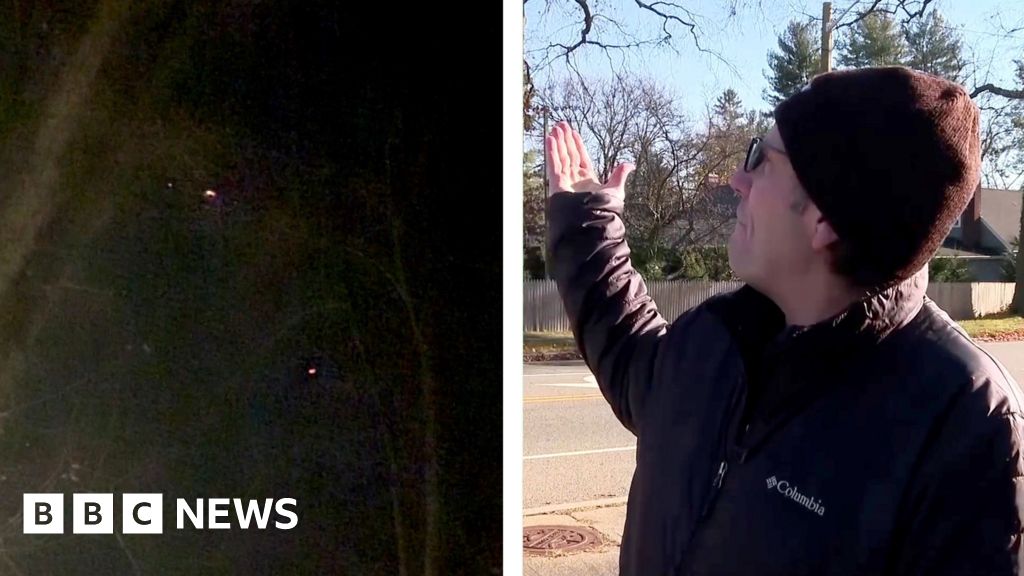ARTICLE AD BOX
Image source, Pool
Image caption,Kim Potter cries while testifying in her own defence
A former Minnesota police officer tearfully recounted the "chaotic" moment she shot and killed a black motorist in April.
Kim Potter, 49, claims she mistakenly drew her gun instead of her Taser and killed 20-year-old Daunte Wright.
She now faces two manslaughter charges for his death. Her defence team claims he was resisting arrest.
In court, Ms Potter testified that she saw "a look of fear" on the face of a fellow officer during the scuffle.
The shooting on 11 April 2021 caused several days of demonstrations.
It happened as another Minnesota police officer, Derek Chauvin, was standing trial for the murder of George Floyd.
Footage of the incident shown in court last week shows Ms Potter repeatedly yelling "Taser" before firing a single shot from her pistol. She is later seen sitting on the pavement, crying.
Testifying in her own defence for the first time on Friday, Ms Potter said that she was standing near the vehicle as Mr Wright and another officer, Mychal Johnson, struggled during the attempted arrest.
"He [Mr Johnson] had a look of fear on his face. It's something I've never seen before," a visibly upset Ms Potter said. "It just went chaotic."
"I remember yelling 'Taser, Taser, Taser', and nothing happened. Then he told me I shot him," she added, breaking down in tears.
She added that she has largely lost memory of what happened in the immediate aftermath of the shooting.
Ms Potter resigned from the police force two days after the incident. In court, she said that "she did not want anything bad to happen to the city" following the shooting.
On Thursday, jurors heard from former Brooklyn Center police chief Tim Gannon, who called Ms Potter "a fine officer".
In his testimony, Mr Gannon said that said that upon reviewing the footage in the aftermath of the incident, he saw "no violation" of "policy, procedure and law."
Ms Potter's attorneys have argued that the use of force - including deadly force - was justified, claiming that Mr Wright endangered the officers in an attempt to flee from the arrest.
In his testimony, Mr Gannon said that his own experiences being dragged by a car during an arrest left him with a feeling of "sheer terror" and "simply trying to survive."
Another defence witness, use-of-force expert and former Springfield, Missouri assistant police chief Stephen Ijames, said he believed that the officers were legally bound to attempt to arrest Mr Wright as a result of an outstanding warrant for a weapons violation.
In his remarks, Mr Ijames added that officers had to operate under the assumption that Mr Wright "very likely could have a gun".
Image source, Getty Images
Image caption,Tensions are high in Minnesota during the trial
He also said that deadly force is warranted in instances in which a police officer is partially inside a car that is attempting to flee. During the incident that led to Mr Wright's death, two officers were attempting to remove him from the vehicle when the shooting took place.
Mr Ijames' testimony stood in stark contrast to one of the defence's key witnesses, use-of-force expert Seth Stoughton, who said that even the use of a Taser would have been "unreasonable" during the incident.
"[A police officer] would not have concluded that there was an imminent threat of death or great bodily harm, and thus the use of force was excessive," he said.
Over several days of testimony, prosecutors alleged that Ms Potter should have known the difference between her gun and a Taser. Assistant Minnesota Attorney General Erin Eldridge said the case was about "recklessness and negligence".
Earlier this week, jurors also heard from Mr Wright's father Arbuey, who called him a "spark of life".
Under state law, a person can be found guilty of second-degree manslaughter if it is proven that they demonstrated negligence by creating unreasonable risk and "consciously take chances of causing death or great bodily harm" to another person.

 3 years ago
37
3 years ago
37








 English (US) ·
English (US) ·